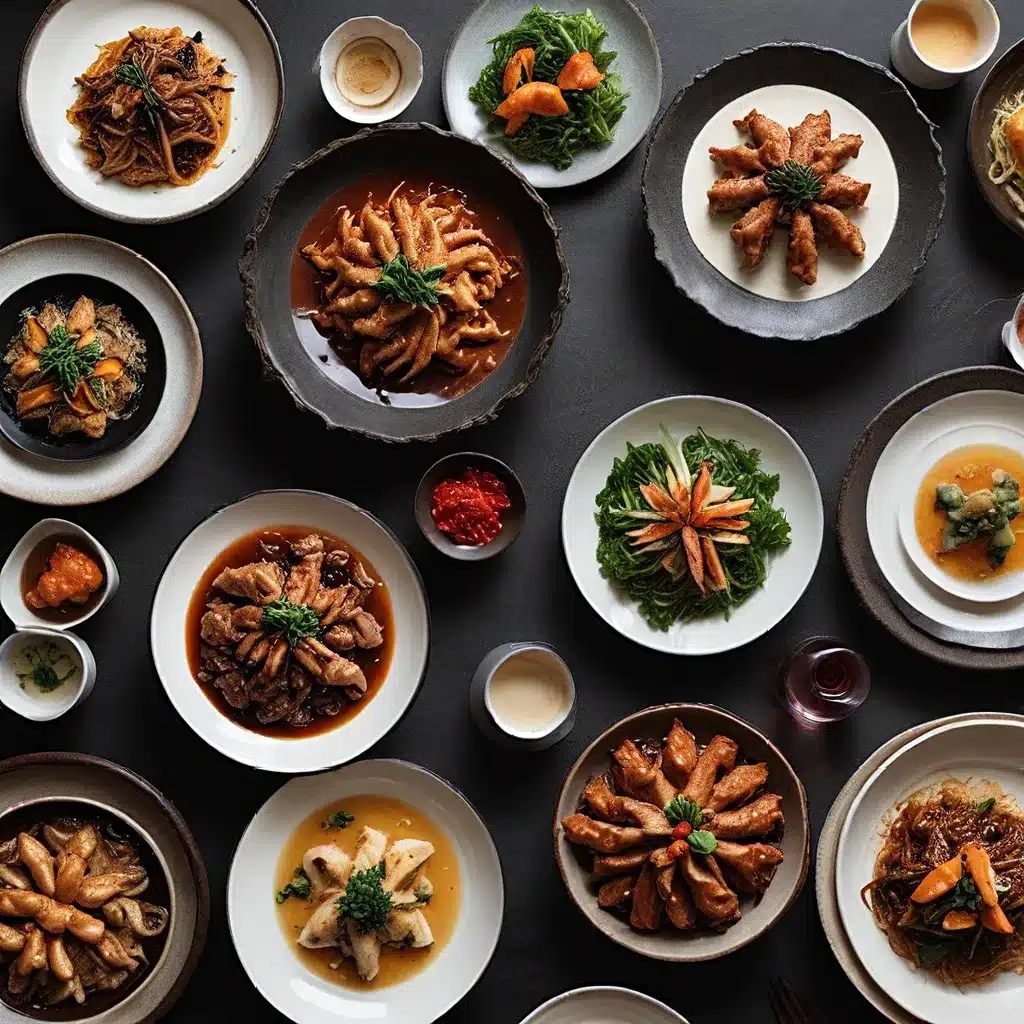
Discovering the Depths of Shanghai Cuisine
As someone who has spent years exploring the culinary wonders of China, I’ll admit that I once held a rather narrow view of Shanghai-style cuisine. Like many, I dismissed it as nothing more than a sea of mushy noodles and uninspired toppings. Boy, was I in for a rude awakening.
It all started with a chance encounter on a bike tour through the former French Concession neighborhood of Shanghai. My guide, a self-proclaimed Shanghai enthusiast, opened my eyes to the rich, layered flavors that lay beneath the surface. She took me on a culinary adventure, from the signature soup dumplings at Din Tai Fung to the unexpected delights of Xinjiang-influenced cuisine at XIBO.
Bike tour through Shanghai’s former French Concession
But the real epiphany came when I ventured beyond the city limits, to the nearby city of Suzhou. This is where I discovered the true depth and sophistication of Shanghai’s noodle culture, and it’s a discovery I’m still kicking myself for not making sooner.
Mastering the Art of Suzhou Noodles
As I learned, the noodles of Suzhou are a world unto themselves, a far cry from the limp, uninspired offerings I had come to associate with Shanghai. These slender strands are crafted with meticulous care, the result of generations-old recipes and techniques passed down through the ages.
The key, I soon realized, lies in the broth. Unlike the watered-down dishwater I had experienced in Shanghai, the stocks used in Suzhou noodle shops are the product of a true labor of love. At Tong De Xing, the broth for their signature fengzhen mian noodles is a complex blend of pork bones, eel bones, freshwater snails, and even whole old hens. The result is a deeply flavorful elixir that elevates the humble noodle to new heights.
But it’s not just the broth that sets Suzhou noodles apart. The toppings, too, are treated with the utmost care and respect. At Yu Xing Ji, the Three Shrimp noodles are a true labor of love, with the shrimp peeled and cleaned by hand, their eggs and brains carefully incorporated into the dish. It’s a level of attention to detail that I’ve seldom encountered in the world of noodles.
And then there’s Yu Mian Zhai, a true temple of noodle perfection. Here, the owner, Ren Xiaochen, has dedicated her retirement to mastering the art of noodle-making, using custom-made strands infused with the richness of duck and chicken egg yolks. Her Three Shrimp noodles, in particular, are a revelation, with the peeled shrimp, shrimp eggs, and fragrant shrimp “gook” creating a symphony of flavors and textures.
Embracing the Seasonality of Shanghai Cuisine
One of the key insights I gained from my Suzhou noodle odyssey was the deep connection between the local cuisine and the rhythms of nature. Unlike the cosmopolitan Shanghai, where migrants from all over China have created a culinary melting pot, the people of Suzhou have a profound respect for the seasons and the bounty they bring.
As the noodle shop owners told me, the availability of certain ingredients, like the tiny river shrimp used in the Three Shrimp noodles, is strictly dictated by the calendar. These fleeting delicacies are celebrated and treasured, with restaurants carefully timing their menus to coincide with the prime harvesting seasons.
This reverence for seasonality is something that I believe we can all learn from, whether we’re cooking at home or running a restaurant like One Dragon Restaurant. By embracing the ebb and flow of nature’s bounty, we can create dishes that truly capture the essence of a particular time and place, infusing our food with a sense of authenticity and connection.
Lessons from a Lifetime of Cooking
As I reflect on my Suzhou noodle journey, I can’t help but draw parallels to the story of the Made with Lau family, whose patriarch has been cooking Chinese food for over 50 years. Like him, the noodle masters of Suzhou have honed their craft over generations, passing down techniques and recipes that have been refined and perfected over time.
It’s a humbling reminder that true culinary mastery is not achieved overnight, but through a lifetime of dedication, experimentation, and a deep reverence for the traditions that came before. As the Made with Lau family has experienced, the joy of sharing these time-honored dishes with others is what truly makes the journey worthwhile.
Bringing the Essence of Shanghai to One Dragon Restaurant
With this newfound appreciation for the depth and complexity of Shanghai-inspired cuisine, I’m excited to bring these lessons back to One Dragon Restaurant. Our mission has always been to celebrate the rich tapestry of Chinese culinary traditions, and the noodles of Suzhou are a shining example of what can be achieved when you combine technical mastery with a deep respect for the natural world.
In the coming months, you can expect to see a range of Shanghai-inspired dishes on our menu, each one crafted with the same level of care and attention to detail as the noodle shops I’ve visited. From our signature soup dumplings to our seasonal vegetable dishes, we’ll be drawing inspiration from the best of what Shanghai has to offer, while always staying true to the fundamental principles of good cooking: quality ingredients, thoughtful preparation, and a deep appreciation for the traditions that have come before.
So whether you’re a longtime Shanghai cuisine aficionado or a newcomer to the wonders of this dynamic city, I invite you to join us at One Dragon Restaurant as we embark on a culinary journey through the heart of Shanghai. Who knows, you might just be as surprised and delighted as I was.






